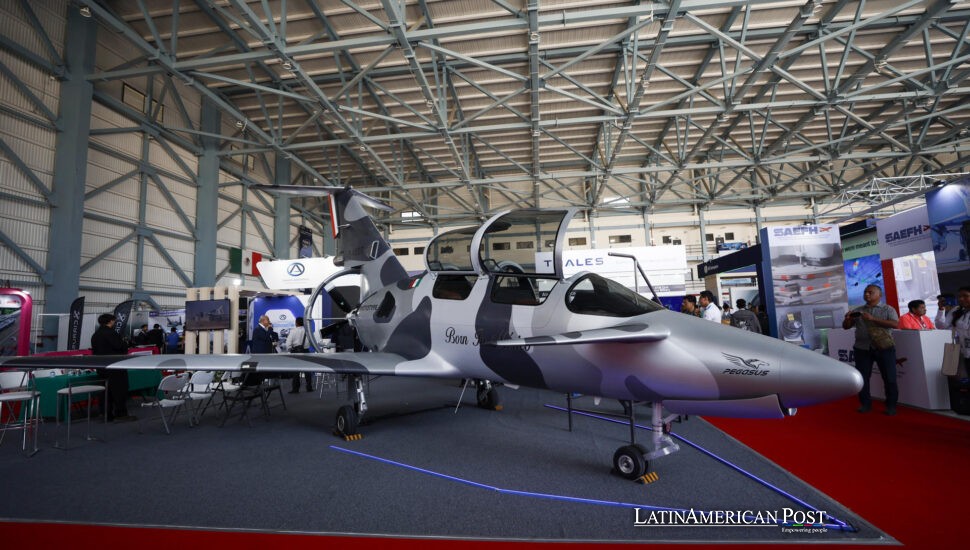Mexican Technology Soars with Groundbreaking Pegasus Aircraft Launch

At FAMEX 2025 Aerospace Fair, Oaxaca Aerospace displayed the Pegasus PE-210A. This event represented a turning point for Mexican aviation. The new locally designed plane intends to enter international sales, a sign of Mexico’s increasing involvement in advanced aircraft development.
A New Player in Latin American Aircraft
Few milestones embody a nation’s aspiration for technological independence, quite like the development of a wholly native aircraft. For Latin America, Brazil’s Embraer famously blazed the trail decades ago with planes like the EMB 110 Bandeirante, forging a reputation for quality and reliability. Argentina also took significant steps with the FMA IA 63 Pampa, a jet trainer entirely designed and assembled domestically. Now, Mexico enters that circle with the Pegasus PE-210A, billed as the country’s first aircraft designed and built 100% on national soil.
The plane’s debut at the FAMEX 2025 fair in Mexico City underscored the scope of ambition behind the project. Oaxaca Aerospace spent 14 years bringing the Pegasus to life, involving a lean team of just 25 people and an investment of roughly 30 million dollars for the design phase alone. Academic institutions provided crucial expertise: Mexico’s Instituto Politécnico Nacional, the Universidad Aeronáutica in Querétaro, and foreign entities such as the Universidad Politécnica de Madrid and the U.S. National Institute for Aviation Research. Cooperation copies earlier Brazilian aviation achievements – those depended on firm bonds between the authorities, learning centers, and domestic technical experts.
The PE-210A aircraft has been noticed for its many uses. The plane has two seats and performs tactical jobs, observation, and pleasure trips. This plane travels 1,600 kilometers – its top speed approaches 388 kilometers per hour. It has equipment for several tasks. For example, security divisions use it for reconnaissance, or hobbyists who want a modern, Brazilian-made plane to pilot it. The appeal goes to various groups. Oaxaca Aerospace’s plan to start mass commercialization in 2026 further cement the Pegasus as a symbol of the country’s broader drive to flex its industrial might.
Pegasus Takes Flight: Features and Ambitions
The PE-210A’s unveiling signaled more than national pride—it spotlighted the viability of a Mexican-built aircraft on the world stage. Weighing in at just a fraction of the cost of foreign counterparts (an estimated 3 million dollars, compared to roughly 10 million for similar models), Pegasus could disrupt a niche in light aviation. Oaxaca Aerospace’s production facility in Oaxaca can build up to 52 planes per year, although the initial run will be limited to six. From there, the expansion will depend on market appetite, which seems promising given the plane’s balance of affordability and advanced functionality.
Officials at the unveiling highlighted the wide variety of missions Pegasus can undertake. Thanks to a tandem seating arrangement, two people can operate or train in the aircraft comfortably. Its five-hour flight endurance means reliable coverage for policing tasks, search-and-rescue, or regional commutes—a substantial advantage in areas lacking major airports. In those respects, Pegasus calls to mind Brazil’s EMB 110, which found success in connecting remote locales.
Oaxaca Aerospace gave information about the Pegasus P-400T, a prototype built for demanding combat missions plus small strikes. The plane has an engine that makes 600 horsepower. It includes durable landing gear and Garmin’s G1000 avionics. The P-400T is for use in difficult situations. Armament compatibility further extends the potential range of customers—think militaries in need of cost-efficient, versatile airframes. With these moves, Mexico sets its sights not just on domestic users but on emerging global regions where second-hand planes often rule the market.
Underlying the entire initiative is a recognition that Latin America, Africa, and Asia harbor a growing demand for modern, adaptable, and low-maintenance aircraft. While used planes still dominate in many countries, local governments increasingly prioritize indigenous industrial expertise and supportive ecosystems. By offering a fresh alternative, Pegasus seeks a foothold that parallels success stories from Embraer and Argentina’s domestic developments. If the PE-210A or P-400T captures even a slice of the global light-plane market, Mexico stands to elevate its role in the region’s aerospace tapestry.
Latin America’s Larger Aviation Landscape
Mexico’s bid to join the ranks of purely homegrown aircraft manufacturers follows in the footsteps of Embraer’s transformation from a small-scale regional producer to a global aviation powerhouse. That journey, marked by the introduction of robust commercial jets like the ERJ family and executive planes, demonstrated the possibilities when government support, private enterprise, and educational institutions unite behind a shared vision. The text emphasized that making a good plan is not the only thing that matters for a favorable result. Dependable support after purchase, international approvals for safety, and careful placement in the marketplace are still important.
Argentina’s situation shows that continuous invention and careful positioning in the marketplace matter, too. The FMA IA 63 Pampa, a jet developed entirely by Argentine engineers, has persisted through political transitions and economic headwinds thanks to niche sales and state-driven endorsements. For Mexico, the Pegasus line could thrive under comparable conditions—particularly if it retains cost benefits and secures the needed regulatory approvals from top agencies like the Federal Aviation Administration (FAA).
Experts see a healthy synergy. Embraer, for instance, focuses on the commercial airliner segment and business jets, while the new Mexican planes concentrate on light aviation roles. If the P-400T manages to compete in tactical or low-intensity conflict zones, it might echo the path of older Embraer militarized designs or even rival Argentine jets that fill training or close air support roles. Meanwhile, the Mexican government’s push toward developing an entirely domestic drone underscores a broader trend: harnessing local talent to cultivate an independent aerospace identity.
Many consider if Mexico can copy a successful method that helped Embraer plus maintain projects in Argentina. Oaxaca Aerospace links with colleges and good results from nearby countries suggest a positive future. From studying its Latin American colleagues, Mexico’s new aerospace area could join business energy with technology sharing, creating a source of new designs.
Also Read: Mexico’s Desert Oasis Where High-Tech Wetlands Spark Renewed Ecologies
In any case, the Pegasus PE-210A signals that Mexico is no longer content simply assembling foreign models under license—it aims to conceive and produce from scratch. As 2026 nears, the rest of the region will watch with anticipation to see how well these planes perform in field conditions and in competitive export markets. The outcome could pave the way for even more advanced designs, including the rumored hydrogen-based propulsion for the P-400T. If so, Latin America’s aerospace map may see a brand-new star rising, reaffirming that homegrown ambition—backed by rigorous engineering—can indeed take flight.





